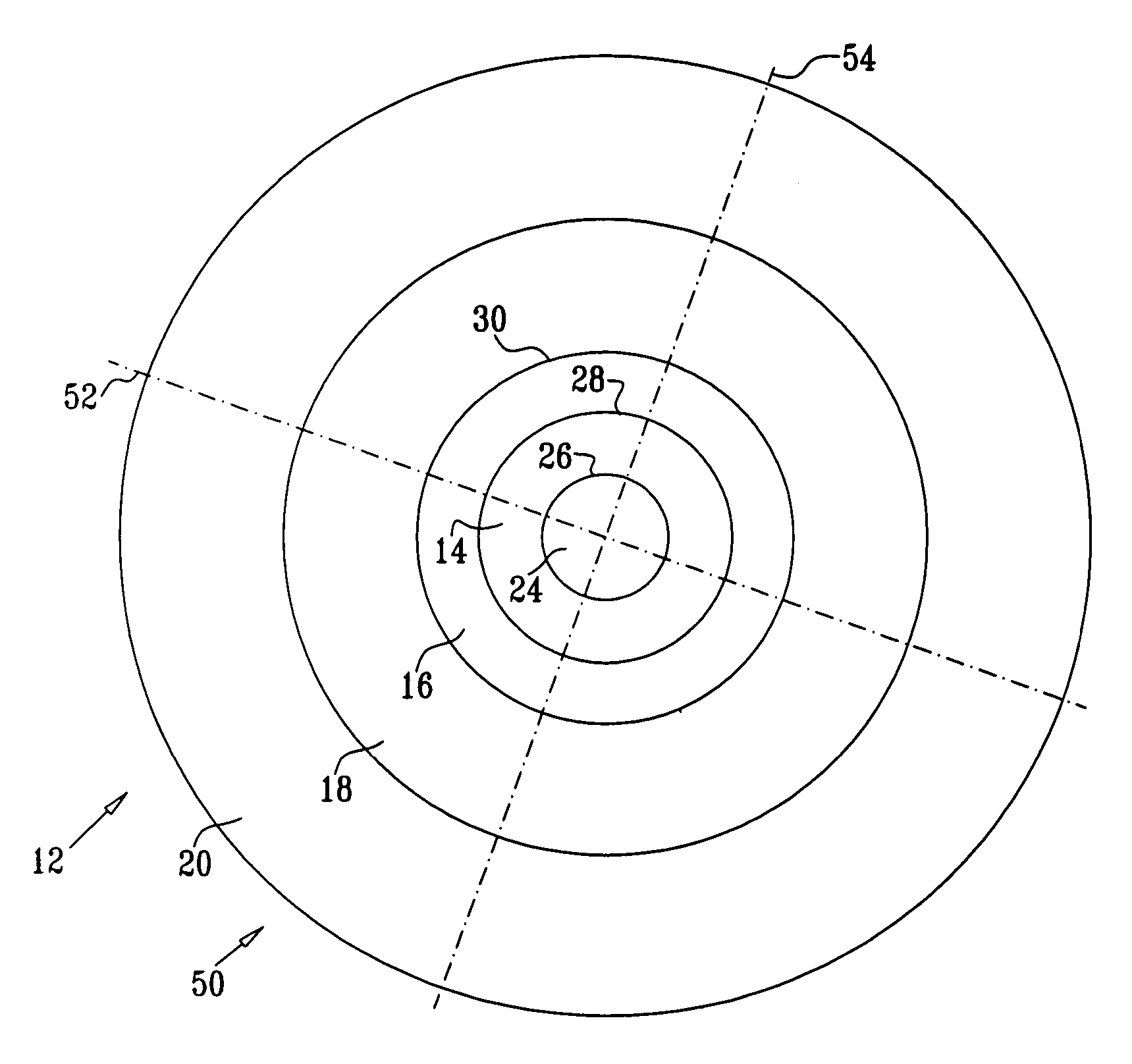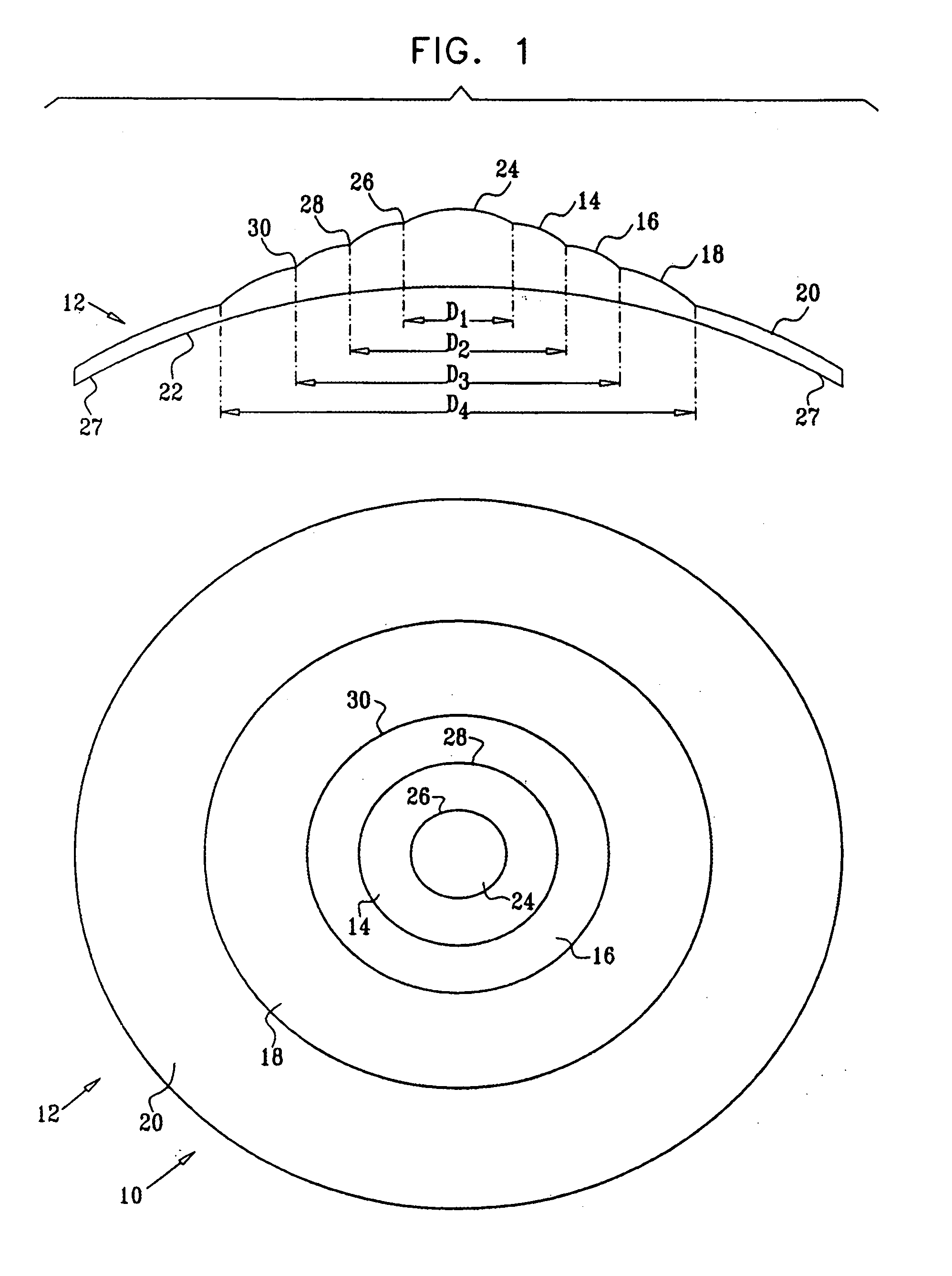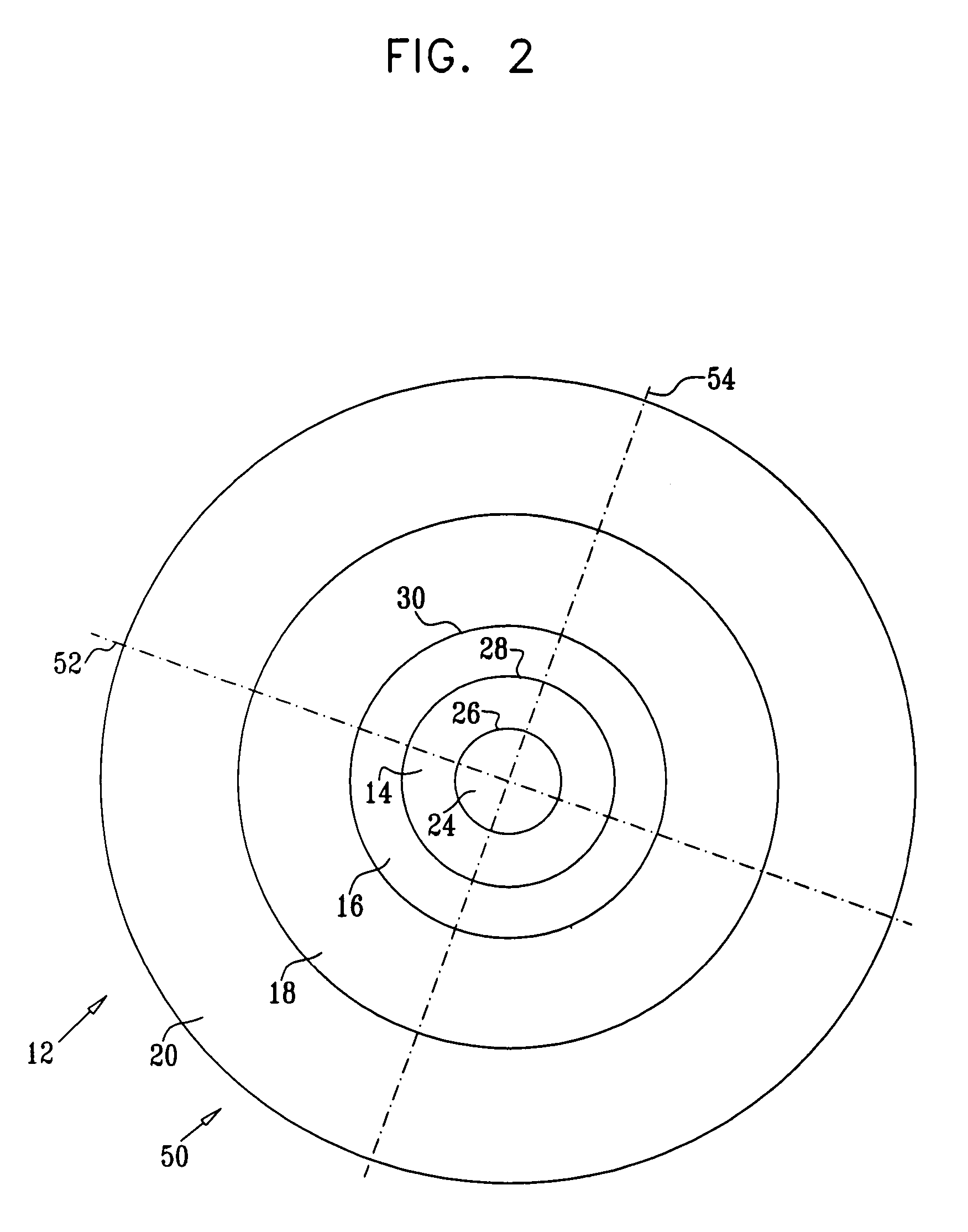Multifocal contact lens
a contact lens and multi-focal technology, applied in the field of contact lenses, can solve the problems that not all of these systems have been well received by users
- Summary
- Abstract
- Description
- Claims
- Application Information
AI Technical Summary
Benefits of technology
Problems solved by technology
Method used
Image
Examples
Embodiment Construction
[0088]Reference is now made to FIG. 1, which illustrates schematic top and cross-section views of a multifocal contact lens 10, herein also termed multirange lens 10, according to an embodiment of the present invention. Lens 10 is typically formed from a hydratable transparent material, such as Methafilcon A, that is known in the art as being used to produce contact lenses, and that is typically used for producing “soft” contact lenses. Alternatively, lens 10 may be produced from any other transparent material, such as glass or plastic, that is adapted to produce contact lenses, such as material known in the art for producing “hard” contact lenses.
[0089]After production, dimensions of lens 10 may alter, typically when the material of the lens hydrates, to “wet” dimensions, which are the dimensions of the lens under normal use. Unless otherwise stated, dimensions of lens 10 given hereinbelow are wet dimensions.
[0090]Lens 10 comprises a near surface 22, which is formed as a base curve...
PUM
 Login to View More
Login to View More Abstract
Description
Claims
Application Information
 Login to View More
Login to View More - R&D
- Intellectual Property
- Life Sciences
- Materials
- Tech Scout
- Unparalleled Data Quality
- Higher Quality Content
- 60% Fewer Hallucinations
Browse by: Latest US Patents, China's latest patents, Technical Efficacy Thesaurus, Application Domain, Technology Topic, Popular Technical Reports.
© 2025 PatSnap. All rights reserved.Legal|Privacy policy|Modern Slavery Act Transparency Statement|Sitemap|About US| Contact US: help@patsnap.com



